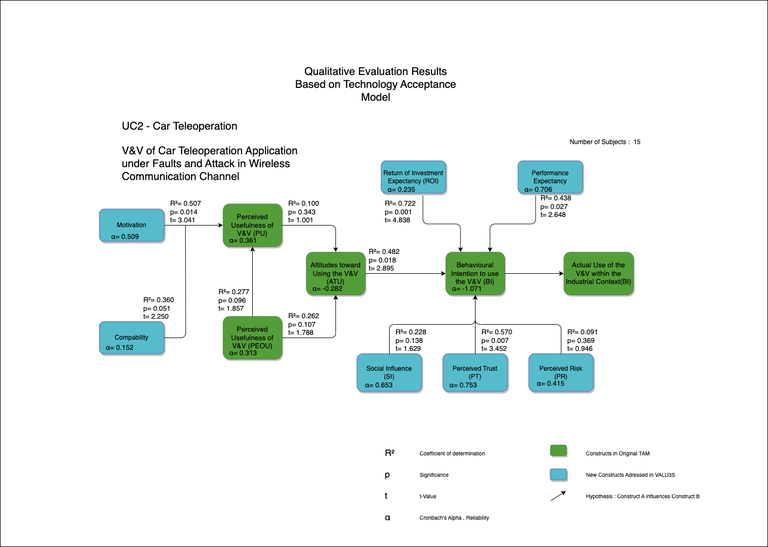Verification and Validation of Car Teleoperation application under Faults and Attacks in Wireless Communication Channel (New)
ComFASE, short for "Communication-based Fault and Attack Simulation Engine," is an open-source tool specifically designed to introduce a wide range of faults and attacks into realistic communication system models for interconnected and automated vehicles. This tool plays a crucial role in evaluating the safety and cybersecurity aspects of vehicles. ComFASE employs the combined power of OMNeT++ (a network simulator), Veins (a vehicular network simulator), and SUMO (a traffic simulator) to create a comprehensive simulation environment. The utilization of ComFASE greatly enhances the Use Case 2 Verification and Validation (V&V) process in terms of time, cost, and efficiency. By leveraging the tool, the V&V of teleoperation system functionality becomes more effective through the injection of diverse faults and attacks into the communication system. Additionally, ComFASE enables the generation and execution of a large number of fault and attack injection experiments. This aids in the identification of dependability and cybersecurity vulnerabilities during the early stages of product development. To fully benefit from ComFASE, users must have access to and familiarity with various simulation frameworks, namely OMNeT++ (a network simulator), Veins (a vehicular network simulator), and SUMO (a traffic simulator). Furthermore, a basic understanding of fault and attack injection, as well as simulation-based fault and attack injection, is necessary for configuring the tool, conducting test campaigns, and effectively evaluating the obtained results. A demonstration of the ComFASE tool is given as part of the following YouTube video: https://www.youtube.com/watch?v=T6bILWIQsO4.
https://repo.valu3s.eu/use-cases/demonstrators-evaluation-results-1/demo-7
https://repo.valu3s.eu/@@site-logo/logo_valu3s_green_transparent.png
Verification and Validation of Car Teleoperation application under Faults and Attacks in Wireless Communication Channel (New)
ComFASE, short for "Communication-based Fault and Attack Simulation Engine," is an open-source tool specifically designed to introduce a wide range of faults and attacks into realistic communication system models for interconnected and automated vehicles. This tool plays a crucial role in evaluating the safety and cybersecurity aspects of vehicles. ComFASE employs the combined power of OMNeT++ (a network simulator), Veins (a vehicular network simulator), and SUMO (a traffic simulator) to create a comprehensive simulation environment. The utilization of ComFASE greatly enhances the Use Case 2 Verification and Validation (V&V) process in terms of time, cost, and efficiency. By leveraging the tool, the V&V of teleoperation system functionality becomes more effective through the injection of diverse faults and attacks into the communication system. Additionally, ComFASE enables the generation and execution of a large number of fault and attack injection experiments. This aids in the identification of dependability and cybersecurity vulnerabilities during the early stages of product development. To fully benefit from ComFASE, users must have access to and familiarity with various simulation frameworks, namely OMNeT++ (a network simulator), Veins (a vehicular network simulator), and SUMO (a traffic simulator). Furthermore, a basic understanding of fault and attack injection, as well as simulation-based fault and attack injection, is necessary for configuring the tool, conducting test campaigns, and effectively evaluating the obtained results. A demonstration of the ComFASE tool is given as part of the following YouTube video: https://www.youtube.com/watch?v=T6bILWIQsO4.

